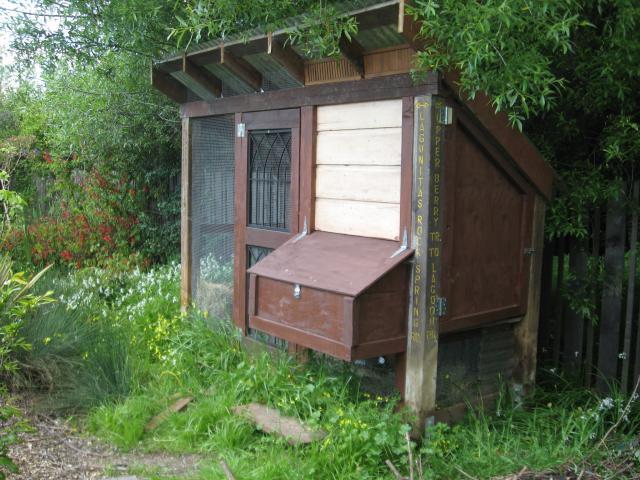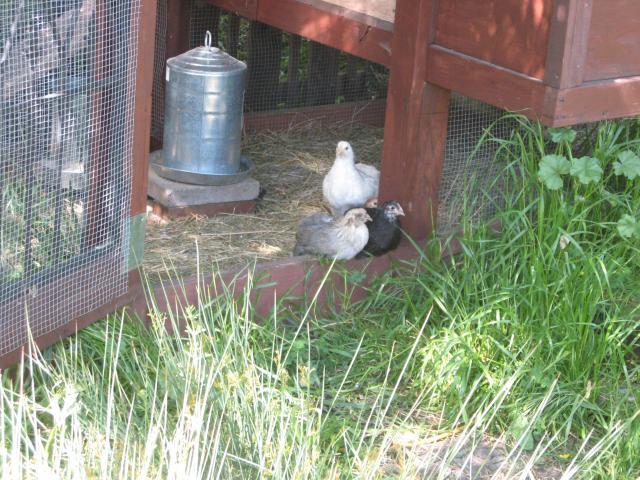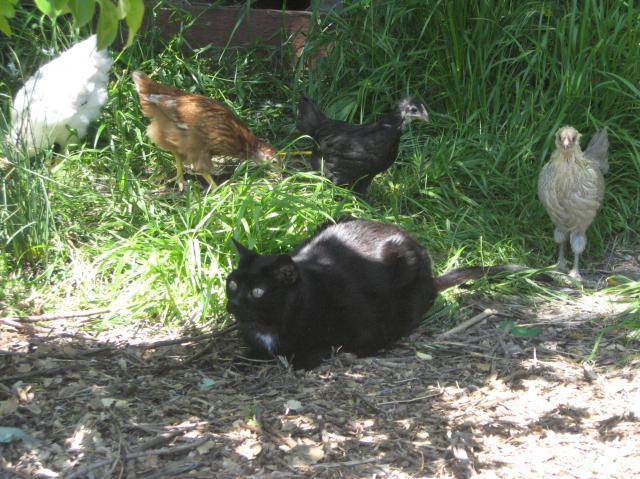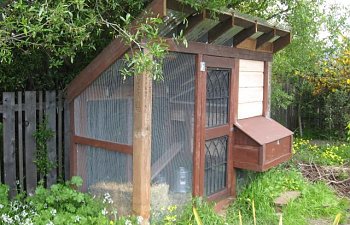Recycled Redwood Recoup

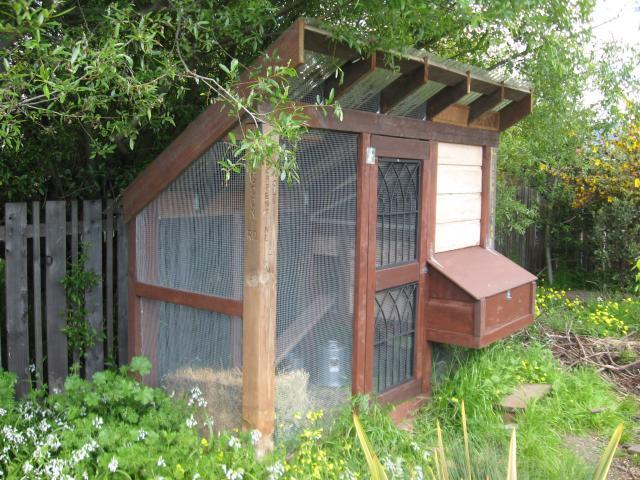
My goals for this coop were to make it mostly from recycled materials, to give four hens enough space, and to avoid creating an eyesore. A secondary goal was to support the neighbor's willow tree, which sags across the fence and needs frequent pruning. I looked at a lot of coops on this website and my inspiration for this design was the "Two Dog Farm" coop (https://www.backyardchickens.com/web/viewblog.php?id=26484).
I had some fairly large dimension redwood and pressure-treated lumber from when we added on to our house and lost part of our deck. I also had access to old 6x6 redwood trail posts, which were being replaced on the watershed lands where I work. This was going to be a chicken fortress.
First step: Pour concrete footings to support the heavy posts, roof joists and the neighbor's sprawling willow. The dimensions of the run are 10' x 4'.


Next, I trenched between the footings and lined the trenches with chicken wire. Once I was done I realized I should have lined the floor of the run with chicken wire, instead of digging trenches one foot deep through willow roots. Aargh! The roof joists are ridiculously large for a coop (2x6s and 2x8s) but that's the wood I had, and the willow will eventually weigh heavily on that roof.


Down the street from us is a recycled building materials yard ("Urban Ore") and I found some plastic roofing and plenty of 2x4s and plywood there. The exterior walls were mostly made from redwood siding we lost when we added onto our house. I found a perfect triangular window in an abandoned building near my work (the building was torn down the following week). But the best find was plastic deck lumber that I found on the side of the road. I found just enough to make the floor of the coop. I also found some inexpensive laborers who stained (the lower half of) the coop.


The coop interior is 4'x4' and includes a redwood and a buckeye branch for perches. The nest boxes are 14"L x 12"W x 16"H. I added a spring to the nest box lid to hold it open. The wood shavings come from a local furniture maker.


I found some small, used, louvered doors to use as adjustable ventilation at the top of the coop. I had two metal gates lying around, which I incorporated into the door to give it some rigidity. In the end the only materials that weren't reused or recycled were the concrete, hardware cloth and metal hardware. I underestimated how expensive those things would be, particularly the anchors for the 6x6 posts (~$20 each).
Our backyard is now named "BEAK Farm," which incorporates the first initial of each of our names. That's not quite as silly as our chicken's names: Donut, Cookie, Mousse and Sophie (Delaware, black australorp, ISA brown (sexlink) and Americauna).



I had some fairly large dimension redwood and pressure-treated lumber from when we added on to our house and lost part of our deck. I also had access to old 6x6 redwood trail posts, which were being replaced on the watershed lands where I work. This was going to be a chicken fortress.
First step: Pour concrete footings to support the heavy posts, roof joists and the neighbor's sprawling willow. The dimensions of the run are 10' x 4'.
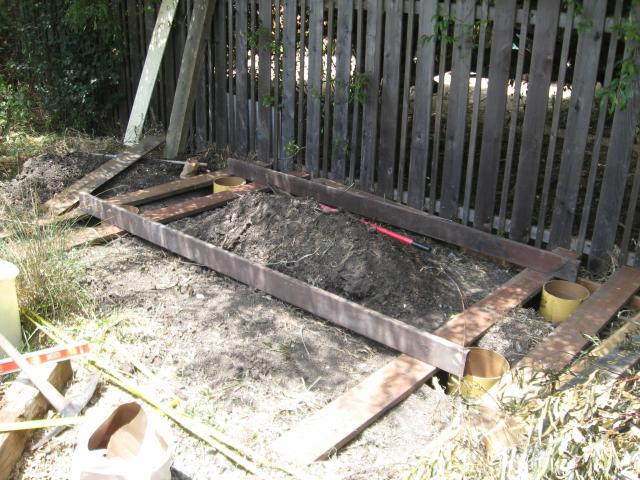
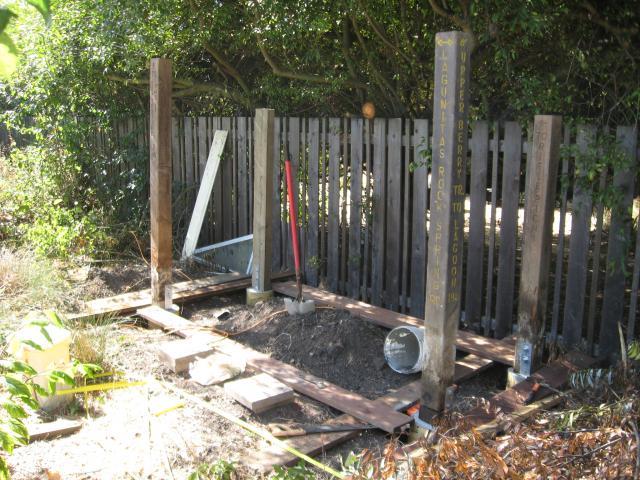
Next, I trenched between the footings and lined the trenches with chicken wire. Once I was done I realized I should have lined the floor of the run with chicken wire, instead of digging trenches one foot deep through willow roots. Aargh! The roof joists are ridiculously large for a coop (2x6s and 2x8s) but that's the wood I had, and the willow will eventually weigh heavily on that roof.
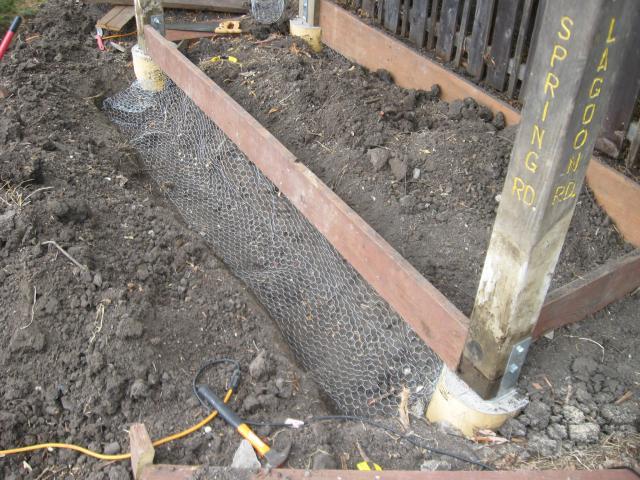
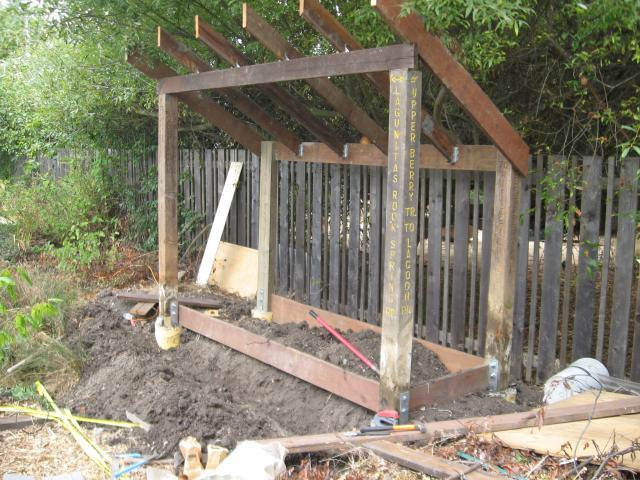
Down the street from us is a recycled building materials yard ("Urban Ore") and I found some plastic roofing and plenty of 2x4s and plywood there. The exterior walls were mostly made from redwood siding we lost when we added onto our house. I found a perfect triangular window in an abandoned building near my work (the building was torn down the following week). But the best find was plastic deck lumber that I found on the side of the road. I found just enough to make the floor of the coop. I also found some inexpensive laborers who stained (the lower half of) the coop.
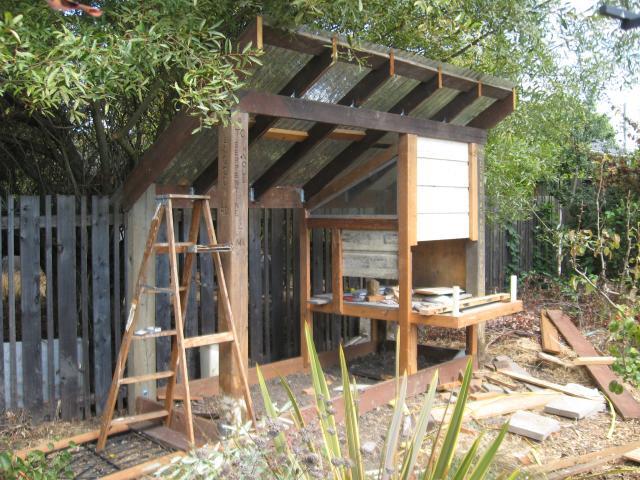
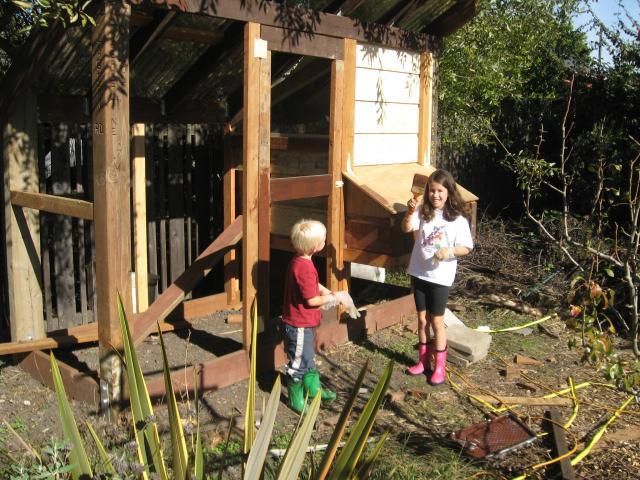
The coop interior is 4'x4' and includes a redwood and a buckeye branch for perches. The nest boxes are 14"L x 12"W x 16"H. I added a spring to the nest box lid to hold it open. The wood shavings come from a local furniture maker.
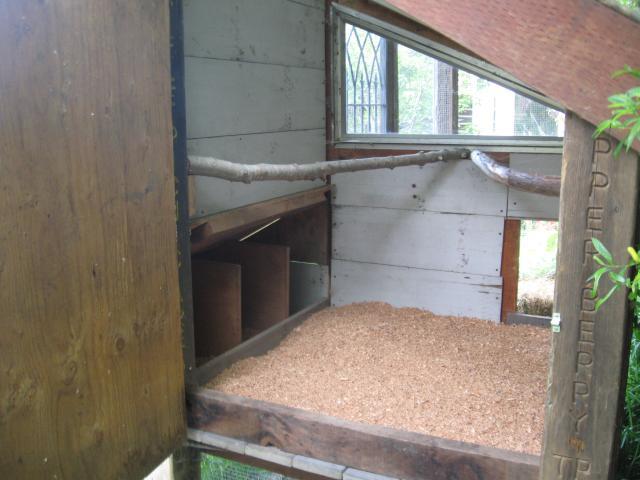
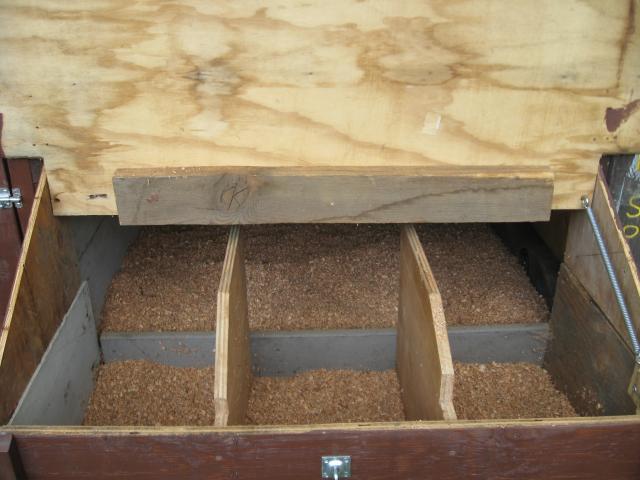
I found some small, used, louvered doors to use as adjustable ventilation at the top of the coop. I had two metal gates lying around, which I incorporated into the door to give it some rigidity. In the end the only materials that weren't reused or recycled were the concrete, hardware cloth and metal hardware. I underestimated how expensive those things would be, particularly the anchors for the 6x6 posts (~$20 each).
Our backyard is now named "BEAK Farm," which incorporates the first initial of each of our names. That's not quite as silly as our chicken's names: Donut, Cookie, Mousse and Sophie (Delaware, black australorp, ISA brown (sexlink) and Americauna).
